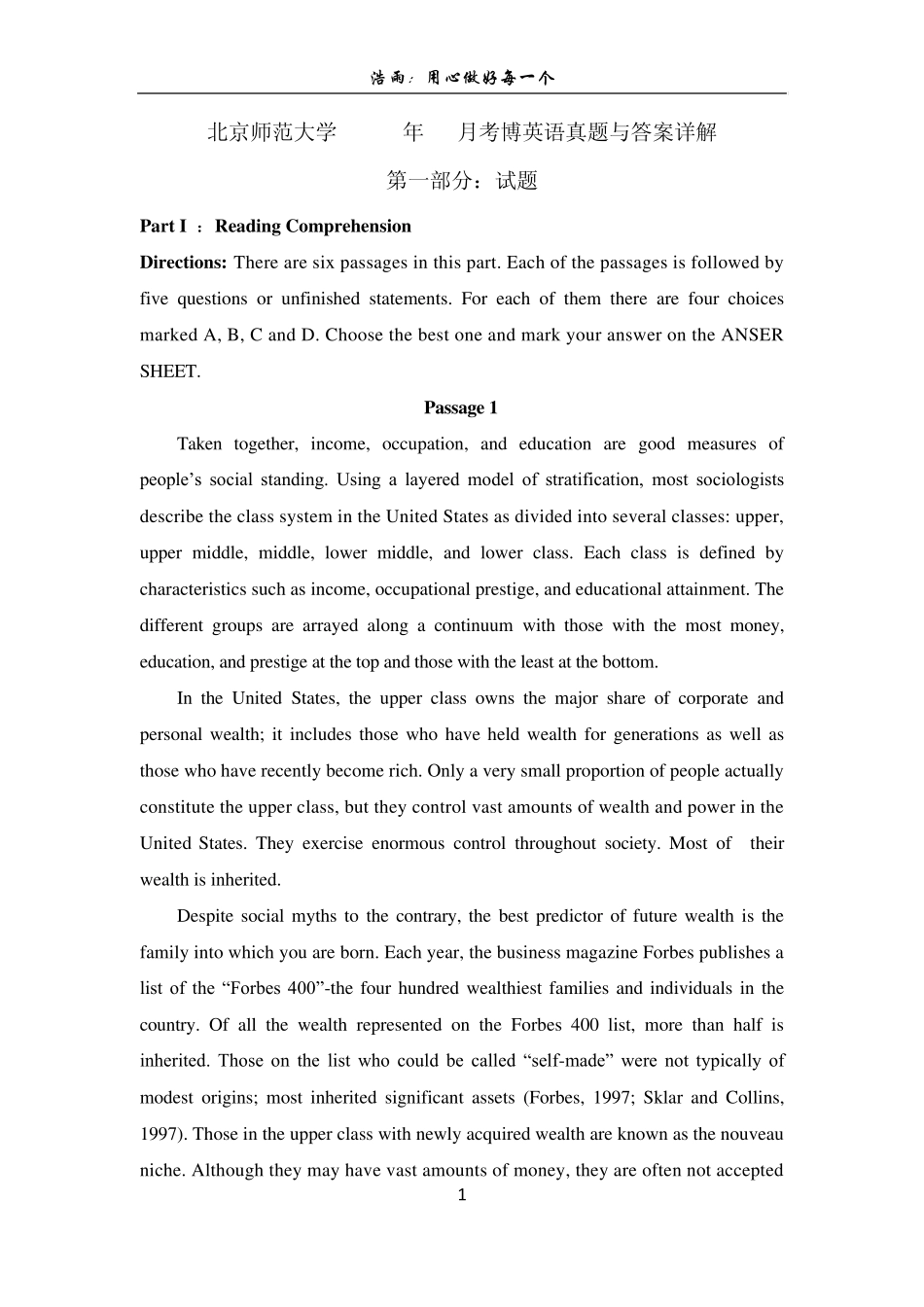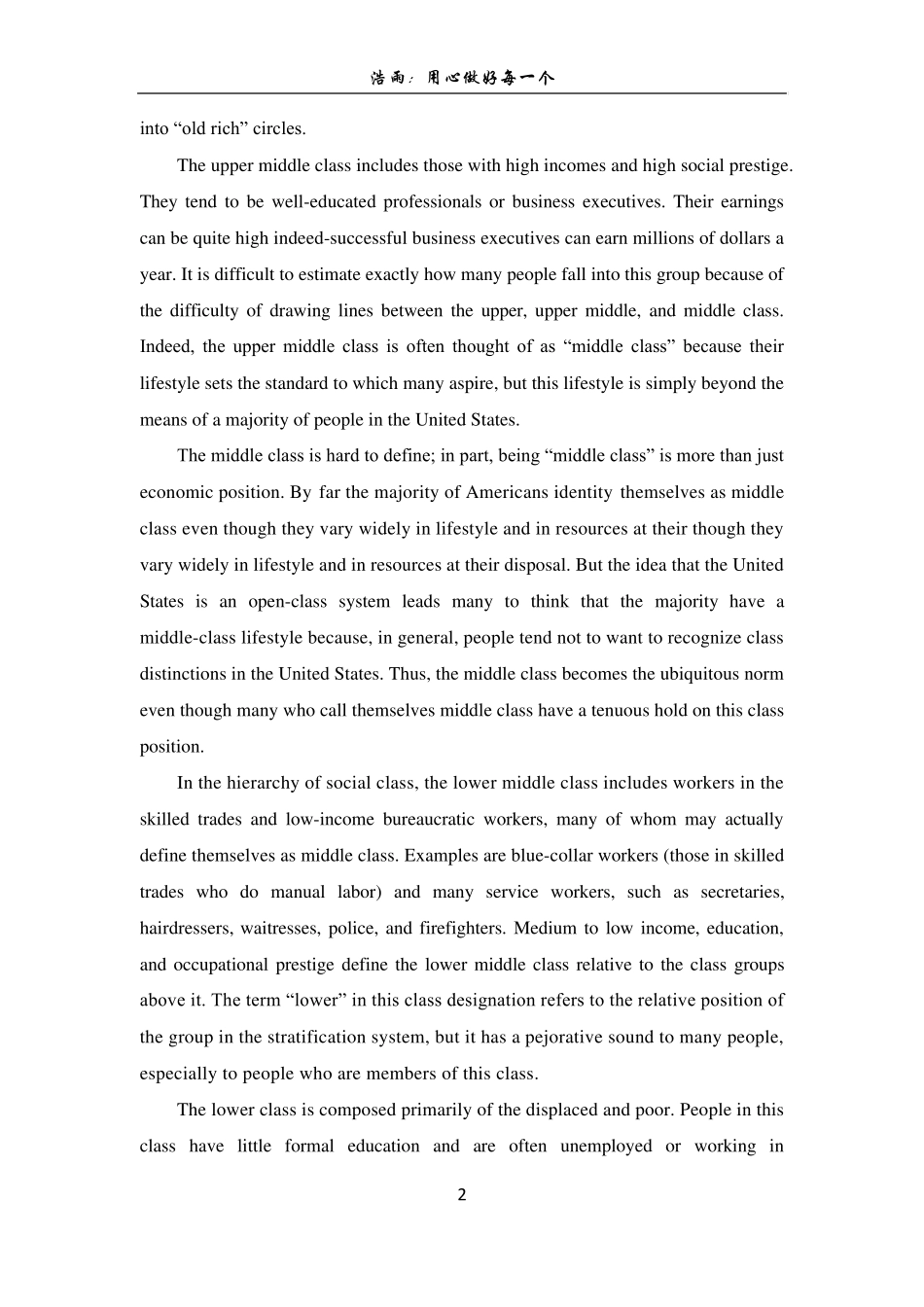浩雨:用心做好每一个 1 北京师范大学 2014 年 3 月考博英语真题与答案详解 第一部分:试题 Part I :Reading Comprehension Directions: There are six passages in this part. Each of the passages is followed by five questions or unfinished statements. For each of them there are four choices marked A, B, C and D. Choose the best one and mark your answer on the ANSER SHEET. Passage 1 Taken together, income, occupation, and education are good measures of people‟s social standing. Using a layered model of stratification, most sociologists describe the class system in the United States as divided into several classes: upper, upper middle, middle, lower middle, and lower class. Each class is defined by characteristics such as income, occupational prestige, and educational attainment. The different groups are arrayed along a continuum with those with the most money, education, and prestige at the top and those with the least at the bottom. In the United States, the upper class owns the major share of corporate and personal wealth; it includes those who have held wealth for generations as well as those who have recently become rich. Only a very small proportion of people actually constitute the upper class, but they control vast amounts of wealth and power in the United States. They exercise enormous control throughout society. Most of their wealth is inherited. Despite social myths to the contrary, the best predictor of future wealth is the family into which you are born. Each year, the business magazine Forbes publishes a list of the “Forbes 400”-the four hundred wealthiest families and individuals in the country. Of all the wealth represented on the Forbes 400 list, more than half is inherited. Those on ...


